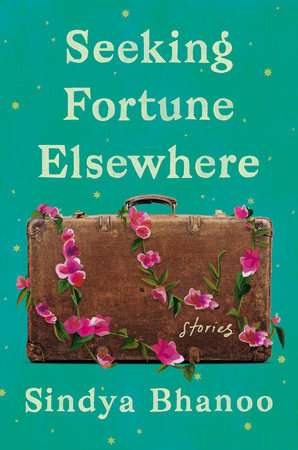'Seeking Fortune Elsewhere': Stories
Sindya Bhanoo's collection revolves around South Indian immigrants, particularly women and girls.
This post contains an affiliate link or links. If you use a link to buy a book, I may earn a small commission. You can find all the books that have been featured in this newsletter in my Bookshop store.
As a resident of Oregon, I keep tabs on the Oregon Book Awards. When the 2023 winners were announced, the winner for fiction jumped out at me: “Seeking Fortune Elsewhere,” by Sindya Bhanoo. I’d either read or heard of the other winners. I knew nothing of this book or its author. I had to check it out.
I’m glad I did. Bhanoo’s eight stories are meticulously constructed portraits of families caught in the endless tug between those who stay and those who go. Though they all revolve around South Indian immigrants, anyone with family members beyond an hour or two’s travel will be able to relate to the emotions stirred up when relationships are stretched across long, often arduous distances. Bhanoo writes beautifully, with every word serving a clear purpose.
In the opening story, “Malliga Homes,” a widow living in an Indian senior community reflects on the social hierarchy created by where the residents’ children have emigrated to:
Those of us at Malliga Homes with children in America rank higher than those with children in Dubai or Qatar. Somewhere in between fall those with children working in Singapore, Australia, England, Germany, and the rest of Western Europe. Africa falls below the Middle East, both because of what people imagine it is like there, and because it is so hard to get to.
After witnessing a fellow resident’s fatal collapse, the narrator visits his wife, whose children are moving back to India to be with her — and finds herself blurting out a lie that casts her own daughter in a similarly dutiful light. During a walk later, she pauses by a set of bougainvillea vines creeping over a wall: “Some of the flowers are stuck on one side while others, by sheer luck, fall to the other.”
Other stories center on a girl observing the differences between the lives of her father, the brother who went to America, and her uncle, the brother who stayed in India; a mother who reaps bitterness from sowing a life for herself apart from her daughters; a classmate who transforms from bullied schoolgirl to celebrity actress to powerful politician.
In “A Life in America,” a longtime professor learns too late that he’s been too familiar with Indian students after a newspaper publishes a story saying he exploited them to load the dishwasher after a party, do his yardwork, clean up his house after a flood.
What could he count on as the facts in his life? A career, a woman, two children. A house. A life in America. Hundreds of students. For all of this, there was plenty of evidence. But what about the truth of who he was, of how he had lived? … It was a feeling, a sense of himself that he once had, that was being erased and rewritten without his consultation.
I got a flicker of that feeling one day when my parents asked me to call a contractor with whom they’d had a dispute. As the contractor told his side of the story, the man he described sounded both like and not at all like my father.
I reported what he’d said to my mother. She was indignant. “Daddy doesn’t even know that word,” she said. I thought he probably did — he certainly knew its equivalent in other languages — but kept that to myself. It was an odd feeling in that moment to see my father, who’d only wanted to seek his fortune elsewhere, through such different sets of eyes.



You make me want to read the book, thanks.